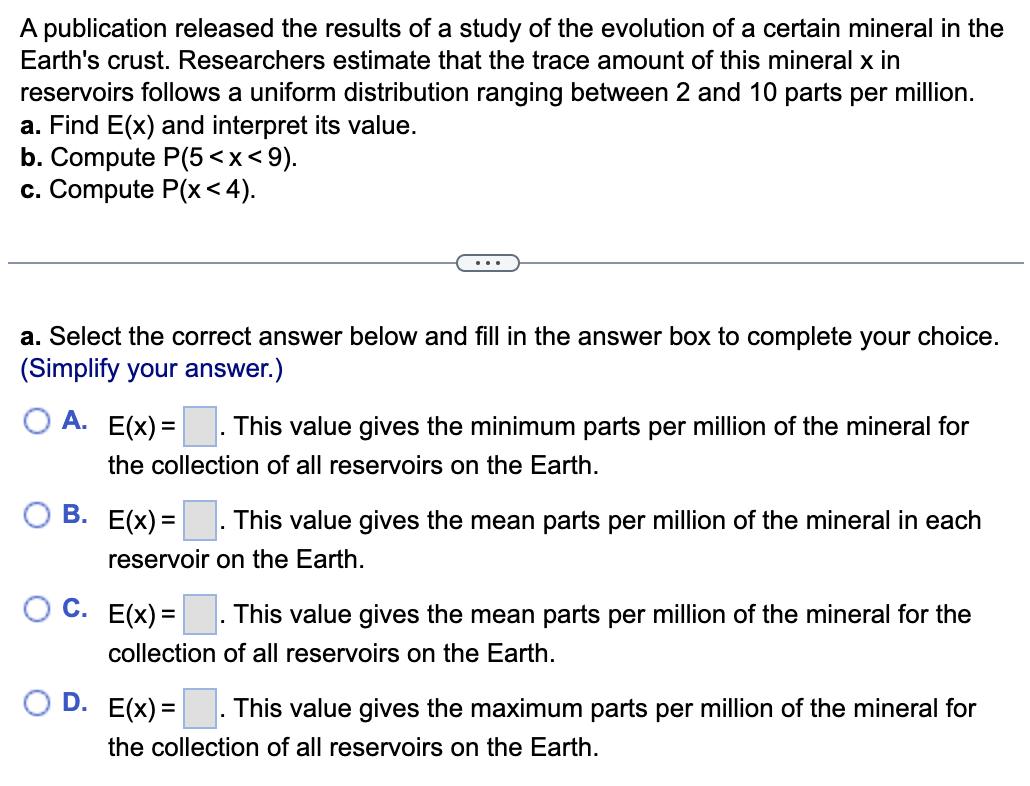A publication released the results of a study of the evolution of a certain mineral in the Earth's crust. Researchers estimate that the trace amount of this mineral x in reservoirs follows a uniform distribution ranging between 2 and 10 parts per million. a. Find E(x) and interpret its value. b. Compute P(5
A publication released the results of a study of the evolution of a certain mineral in the Earth's crust. Researchers estimate that the trace amount of this mineral x in reservoirs follows a uniform distribution ranging between 2 and 10 parts per million. a. Find E(x) and interpret its value. b. Compute P(5
Glencoe Algebra 1, Student Edition, 9780079039897, 0079039898, 2018
18th Edition
ISBN:9780079039897
Author:Carter
Publisher:Carter
Chapter10: Statistics
Section10.1: Measures Of Center
Problem 9PPS
Related questions
Question

Transcribed Image Text:A publication released the results of a study of the evolution of a certain mineral in the
Earth's crust. Researchers estimate that the trace amount of this mineral x in
reservoirs follows a uniform distribution ranging between 2 and 10 parts per million.
a. Find E(x) and interpret its value.
b. Compute P(5<x<9).
c. Compute P(x<4).
a. Select the correct answer below and fill in the answer box to complete your choice.
(Simplify your answer.)
A. E(x)=. This value gives the minimum parts per million of the mineral for
the collection of all reservoirs on the Earth.
B. E(X)=
This value gives the mean parts per million of the mineral in each
reservoir on the Earth.
C. E(X)= |. This value gives the mean parts per million of the mineral for the
collection of all reservoirs on the Earth.
D. E(x)=. This value gives the maximum parts per million of the mineral for
the collection of all reservoirs on the Earth.
Expert Solution
This question has been solved!
Explore an expertly crafted, step-by-step solution for a thorough understanding of key concepts.
Step by step
Solved in 2 steps with 1 images

Recommended textbooks for you

Glencoe Algebra 1, Student Edition, 9780079039897…
Algebra
ISBN:
9780079039897
Author:
Carter
Publisher:
McGraw Hill


Glencoe Algebra 1, Student Edition, 9780079039897…
Algebra
ISBN:
9780079039897
Author:
Carter
Publisher:
McGraw Hill
